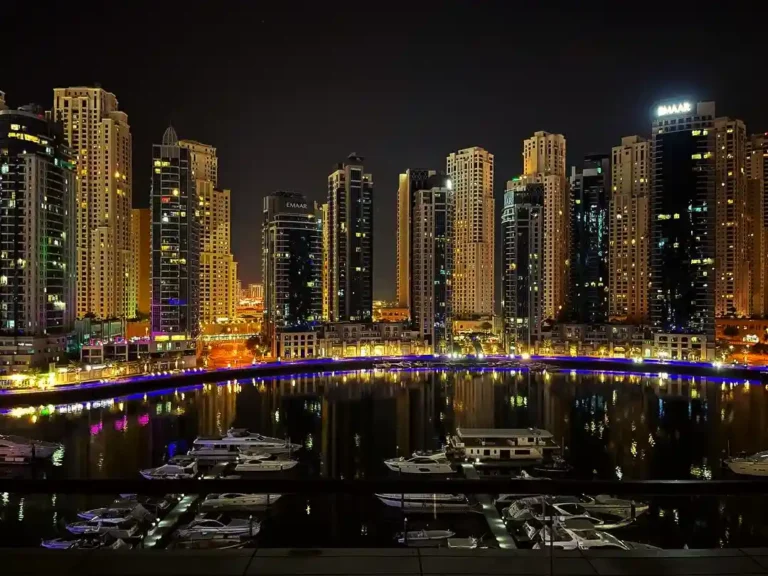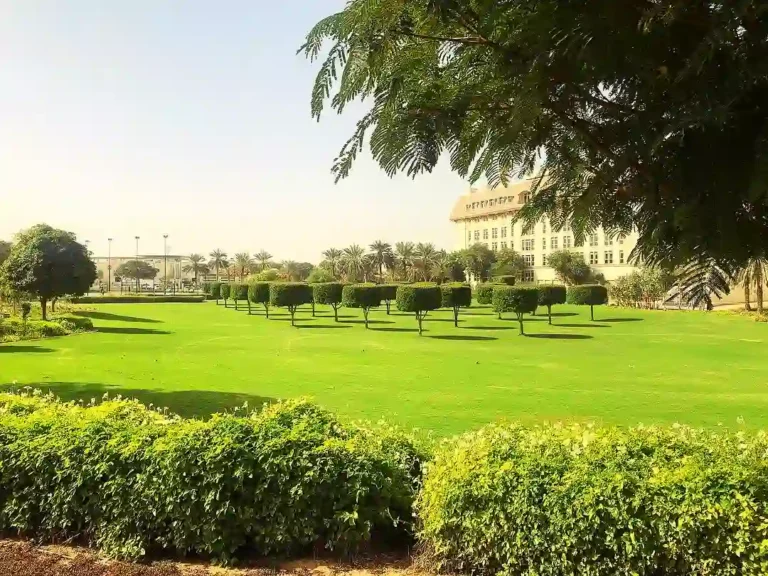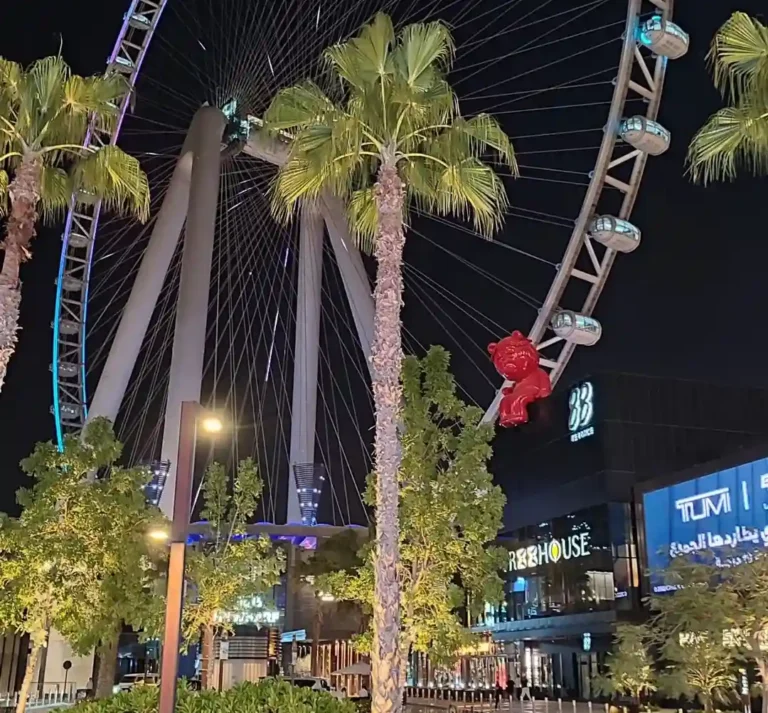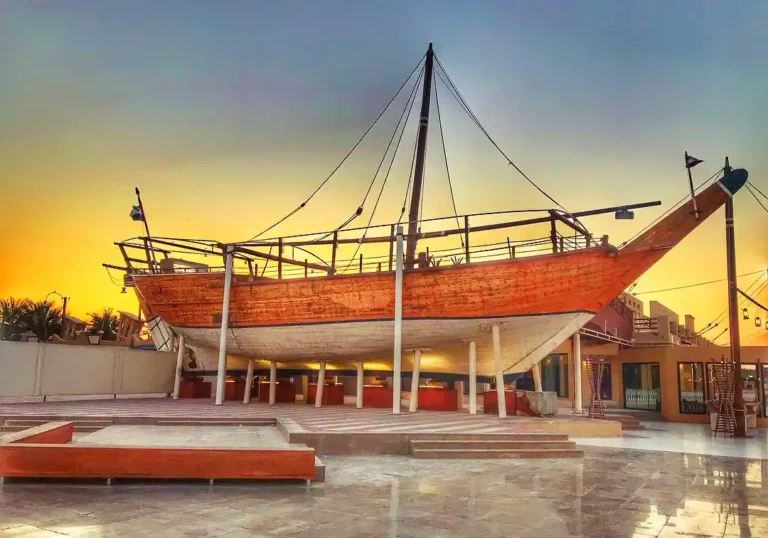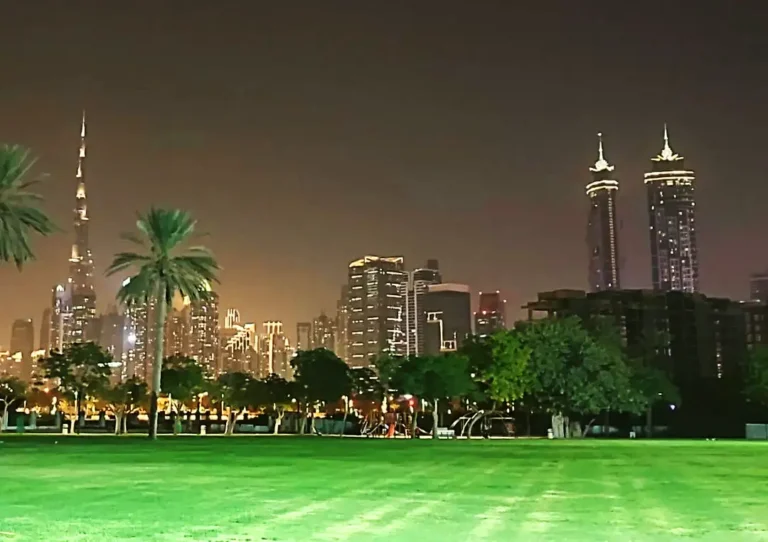Al Fahidi Fort Dubai Guide: A Must-Visit Historical Landmark
Welcome to the Al Fahidi Fort Dubai Guide! This historic landmark is a must-visit for anyone looking to immerse themselves in the rich culture and heritage of the United Arab Emirates. Located in the heart of Dubai, Al Fahidi Fort is a symbol of the city’s past and a testament to its progress.
Built-in the late 1700s, this fort has stood the test of time. It now serves as a museum, showcasing the traditional way of life in Dubai before transforming into a bustling metropolis.
From its impressive architecture to its fascinating exhibits, there’s no shortage of things to see and learn at Al Fahidi Fort. So come along as we take you through this remarkable historical gem.
A Brief History of Al Fahidi Fort

The Al Fahidi Fort, the oldest building in modern Dubai, symbolizes the city’s rich history. Erected in the late 18th century, this grand edifice features towers on three sides, stately canons at the entrance, and flags of Dubai and the UAE proudly fluttering at the main gate.
Before stepping into the fort, you will notice a traditional Arabian dhow (boat) docked at its forefront, a silent observer of the centuries gone by. This boat, dating back to the 1830s, once braved the waters of the Indian Ocean and the Arabian Sea and now stands as a reminder of Dubai’s maritime heritage.
Within the Al Fahidi Fort walls, the Dubai Museum welcomes visitors into its heart, unfolding tales of a bygone era. Opened to the public in 1971, the museum portrays the lifestyle before the discovery of oil that transformed the region’s destiny.
The exhibits transport you to the past, vividly depicting traditional Arab houses, mosques, and date farms, along with the stunning desert and marine life that characterizes the UAE. The museum fills in the historical context often overshadowed by the glitz and glamour of modern Dubai.
Music enthusiasts will be particularly intrigued by the section dedicated to musical instruments, which range from traditional drums to unique bagpipes made of goatskin. Further, the museum offers an insightful view of the region’s biodiversity, with a dedicated section displaying the rich flora and fauna of the UAE.
Together, these exhibits provide a nuanced perspective on Dubai’s past, visiting Al Fahidi Fort as an essential part of any cultural journey through the city.
Al Fahidi Fort Dubai Location – How to Get There?
Al Fahidi Fort is conveniently located on Al Fahidi Street, near Abu Thalib Road, in the historic area of Bur Dubai. Its central location makes it an easily accessible destination from various parts of the city.
Here’s a simple guide to reaching this historic landmark:
For those travelling from Dubai Airport, you’re in luck! The fort is just an 8-minute drive away, making it a perfect first stop for history enthusiasts landing in Dubai.
The Dubai Metro system offers a direct and economical route if you prefer public transportation. Hop onto the metro at the airport and head to the Burjuman station. From Burjuman, take another metro towards Al Fahidi station.
Once you reach Al Fahidi station, the fort is a 9-minute walk away. The walk itself is a treat as you pass through the charming old streets of Bur Dubai, soaking in the area’s historic ambience.
Al Fahidi Fort Dubai Timings
Curious about when to visit the Al Fahidi Fort? The historic landmark is welcoming to guests from Saturday to Thursday each week. The Dubai Museum within its walls operates on a comfortable schedule, providing visitors ample time to explore:
- Open: 8.30 am
- Close: 8.30 pm
With these timings in mind, you can plan your visit to ensure you fully experience the fort’s rich history.
Al Fahidi Fort Dubai Ticket Price
Planning your visit to the Al Fahidi Fort? Here’s what you need to know about the ticket pricing:
The entrance fee for the museum within the Al Fahidi Fort is quite affordable. Adults are charged 3 AED, while children below 6 years old only need to pay 1 AED.
The good news is that your ticket covers entry to the Dubai Museum, meaning you don’t have to worry about paying extra to explore the treasures within.
What to See at Al Fahidi Fort?
As you begin your journey through Al Fahidi Fort, ancient maps of Dubai and the Emirates greet you at the entrance. These maps highlight the area’s rapid expansion following the oil boom, tracing the evolution of this majestic city from a modest fishing village to a globally renowned metropolis.
As you move deeper into the fort, you come across a meticulously crafted model of a traditional souk. This lifelike representation vividly depicts the daily life and professions of craftsmen and shopkeepers, giving you a glimpse into the thriving markets of yesteryears.
Explore the various galleries that perfectly capture the stark contrast between rural and urban lives in Dubai. These exhibits help visitors understand the nuances of Emirati society and its dynamic evolution over the years.
Among these, although small, the pearl diving section offers an interesting insight into the difficult yet fascinating world of pearl diving. It shows how the divers of the past, armed with basic gear, plunged into the sea in search of precious pearls.
Next, wander through the monument section adorned with ancient tombs, weapons, pottery, and models of buildings, each echoing stories of a bygone era. The natural phenomena and astronomy wing presents a fascinating perspective on the region’s understanding of the universe.
The last gallery showcases a trove of invaluable artefacts from archaeological digs, testifying to the region’s rich history. Throughout your visit, keep an eye out for small videos peppered across the museum, each unravelling different aspects of Dubai’s history and enhancing your understanding of this extraordinary city.
Understanding The Architecture of Al Fahidi Fort

The Al Fahidi Fort, one of Dubai’s most renowned monuments, boasts a unique square shape with three towering sides. Built in the 18th century at the city’s edge, the fort’s architecture is a testament to Dubai’s past.
Originally designed as a defensive fortress, it was an essential outpost for storing weapons and sometimes served as a prison. As the city developed, some of the Al Fahidi Fort was carefully renovated into the Dubai Museum, preserving Dubai’s precious Bedouin heritage within its ancient walls.
This museum opened in 1971. It is the oldest building in the city. It offers visitors an authentic journey into Dubai’s past before oil transformed it into a bustling global hub. The museum returns to when Dubai was a humble settlement in the harsh desert, battling the elements for survival.
Its exhibits have been carefully preserved in their natural form, reflecting the traditional lifestyle of the Bedouin era and offering a genuine snapshot of Dubai’s rich history.
Exploring The Dubai Museum Within
Located at the southern end of the Dubai Creek, the Dubai Museum, nestled within the Al Fahidi Fort, is a treasure trove of history waiting to be explored. This museum is renowned for its exhibits portraying the region’s rich history of pearl diving.
On display, you’ll see actual weights and scales used during that time, offering a glimpse into this industry’s significant role in the region’s economy.
As you explore the museum, you’ll find a collection of well-preserved artefacts dating back to 3000 BC. These items, carefully preserved for longevity, offer visitors an opportunity to step back and witness the ancient civilization that once thrived in this part of the world.
One of the most striking features of the Dubai Museum is the stark contrast it highlights between old and modern Dubai. This contrast is particularly visible in the exhibits, presenting a vivid journey from a humble fishing village to a cosmopolitan city.
As you wander through the museum, the walls whisper tales of Dubai’s remarkable transformation, leaving you with deep awe and admiration for the city’s indomitable spirit.
Things to Do at Al Fahidi Fort Dubai
When visiting Al Fahidi Fort, you’re stepping into a world far removed from the glittering skyscrapers of Dubai’s contemporary skyline. This historic structure, built from materials harvested from the desert, has endured for centuries; its earth-toned finishes and understated designs starkly contrast the city’s modern architecture.
• Start your journey with the fort’s courtyards, where you can marvel at the traditional boats and weapons of Dubai’s maritime and military history.
• Step into the Dubai Museum housed within the fort and walk through ancient souks. These traditional bazaars, meticulously replicated, offer a fascinating glimpse into the vibrant trading activities of Dubai’s past.
• Don’t miss the Arish and Majlis structures and reconstructions of traditional Emirati homes that provide insight into the everyday life of the Emiratis.
• Spend time exploring the various galleries and exhibits, which feature multiple artefacts, from vessels, cutlery, and pottery to coins, tools, and textiles.
• Immerse yourself in Dubai’s desert life through the life-size dioramas depicting scenes from the Bedouin era.
• In the museum’s wing dedicated to antique monuments, you’ll find a captivating display of ancient pottery, weapons, tombs, and model buildings, bringing to life the urban communities of the past.
• Lastly, make sure to visit the Dubai wing of the museum, which serves as a bridge between the past and the present, capturing the remarkable transformation of this incredible city.
Facts Al Fahidi Fort in Dubai
Al Fahidi Fort, a shining jewel in Dubai’s crown, is brimming with fascinating facts that offer glimpses into the rich tapestry of the city’s history and heritage:
- The Al Fahidi Fort once served as a prison, echoing the challenges and conflicts of a bygone era.
- It houses the Dubai Museum, which features an elaborate diorama of an archaeological site dating back to 3000 BC.
- The diorama showcases the significant role of seafarers in the region’s history, depicting the construction of traditional dhows and an array of marine life.
- The fort’s architectural brilliance is characterized by three distinctive towers standing at its corners, each silently narrating stories of the past.
- Reflecting its historical importance, the Al Fahidi Fort is featured on the Dh100 note, a testament to its integral role in Dubai’s heritage.
- In 1971, the fort was officially repurposed to become the Dubai Museum, offering locals and visitors a glimpse into the city’s past and preserving its unique history and heritage.
- A popular landmark, the museum attracts approximately 1 million visitors annually, establishing itself as a must-visit destination for culture and history enthusiasts.
How to Plan Your Visit to Al Fahidi Fort
Planning your visit to Al Fahidi Fort can be both exciting and rewarding. Here are some tips to make your trip more enjoyable and meaningful:
- Decide on the best day and time for your visit. Remember, the museum within the fort is open from 8.30 am to 8.30 pm, Saturday through Thursday.
- Prepare for the weather. Dubai can get quite hot, especially in the summer months. Dress comfortably and carry water with you.
- Plan your route. The fort is centrally located and can be easily reached by metro, taxi or car. If you choose to use public transportation, make sure to get off at Al Fahidi station and enjoy the short walk through the historic streets of Bur Dubai.
- Set aside enough time to thoroughly explore the museum’s exhibits. There is much to see and learn, from the vibrant dioramas depicting life in Dubai before the oil boom to the fascinating artefacts unearthed from archaeological digs.
- Lastly, remember to respect the museum’s rules. Keep your phone silent, ask for permission before taking photos and avoid touching the exhibits.
Al Fahidi Fort FAQs
Here are some frequently asked questions about Al Fahidi Fort:
- What is the entrance fee for Al Fahidi Fort?
The entrance fee for adults is 3 AED, while children below 6 years old only need to pay 1 AED.
- What are the visiting hours of the fort?
Al Fahidi Fort is open from 8.30 am to 8.30 pm from Saturday to Thursday.
- How do I reach Al Fahidi Fort from Dubai Airport?
The fort is an 8-minute drive from Dubai Airport. If using public transport, take the metro from the airport to Burjuman station, then another metro towards Al Fahidi station. The fort is a 9-minute walk from there.
- What exhibits can I see at Al Fahidi Fort?
The fort houses the Dubai Museum, which features an array of exhibits, from ancient maps and dioramas of traditional life to rare artefacts from archaeological digs.
- Can I take photos at the fort?
Yes, you can take photos, but you must secure prior permission.
- Is there a dress code to visit Al Fahidi Fort?
No specific dress code exists, but dressing modestly and comfortably, considering the hot weather is recommended.
Conclusion
Visiting Al Fahidi Fort in Dubai is like stepping back in time. This historic monument offers an enriching journey through Dubai’s past, from its humble beginnings as a small fishing village to its present-day status as a cosmopolitan city.
The fort’s captivating architecture, the intriguing exhibits at the Dubai Museum, and the enriching stories of a bygone era make it a must-visit landmark for anyone seeking to understand the true essence of Dubai beyond its skyscrapers and modern luxuries.
Whether you’re a history enthusiast, a culture lover, or a curious traveller, visiting Al Fahidi Fort promises a unique and unforgettable experience.
So, as you plan your trip to this awe-inspiring city, carve out some time to visit this remarkable fort. You’ll leave with a deeper understanding and appreciation of the city’s rich past, resilient spirit, and vibrant culture.

Meet Amelia Raina, the adventurous soul behind TravelersEnthusiasm.com. With a heart set on exploration, she crafts tales that whisk readers from European alleys to Asian landscapes. Raina’s stories are genuine, reflecting her deep connections and reverence for diverse cultures. When not traveling, she’s sketching in cafes or exchanging tales with fellow wanderers.


